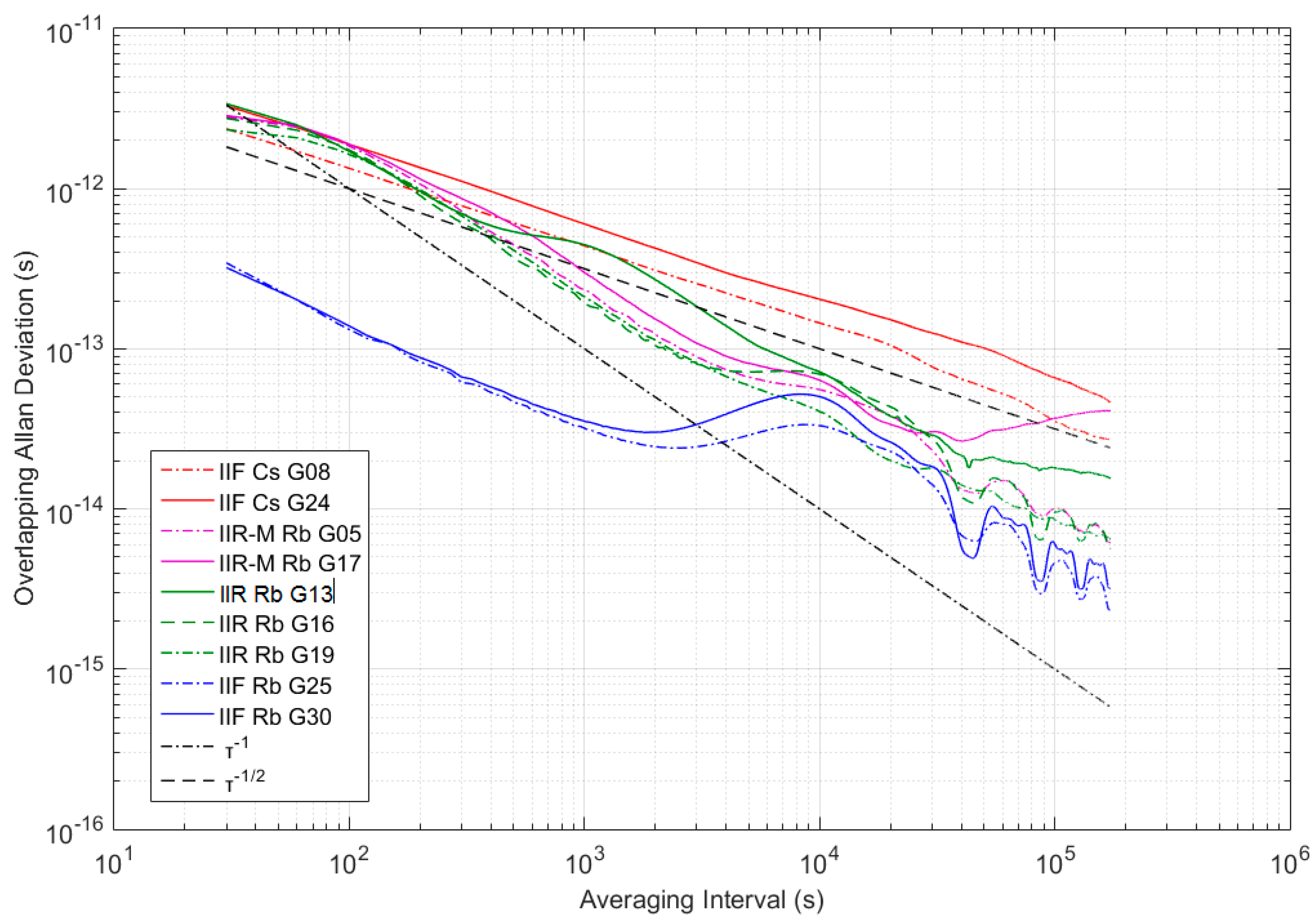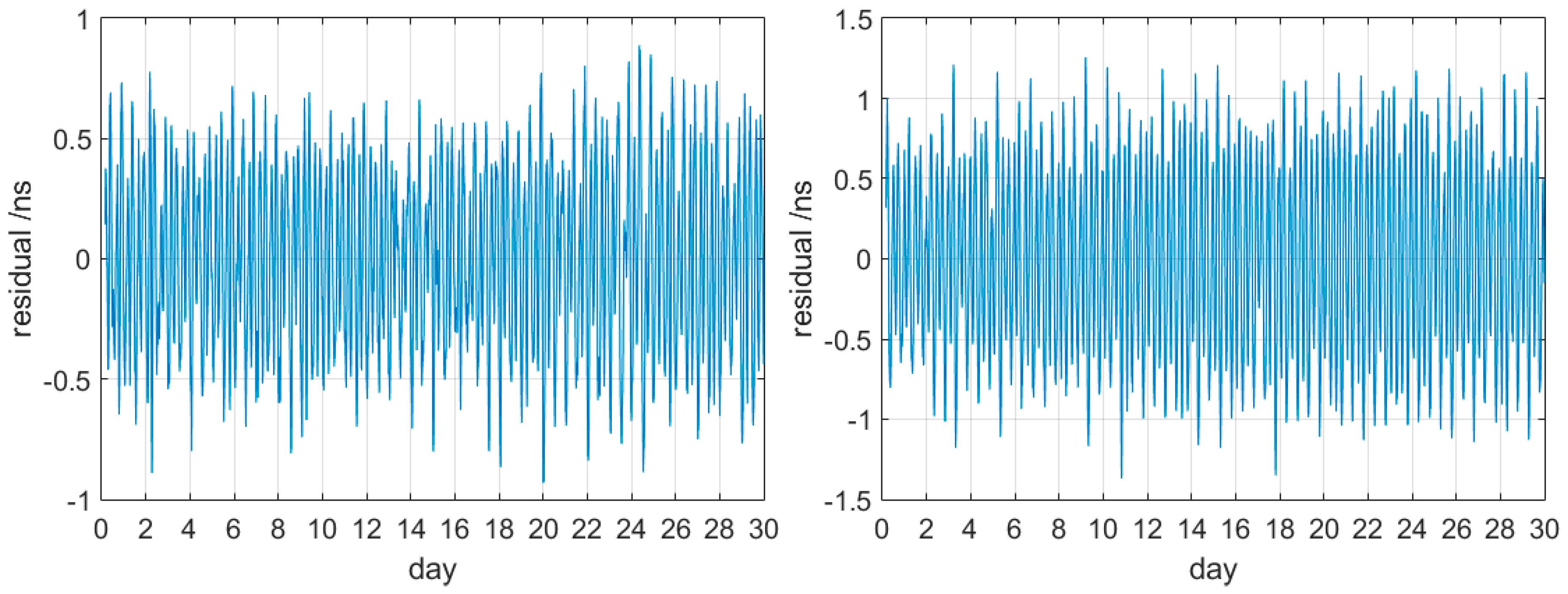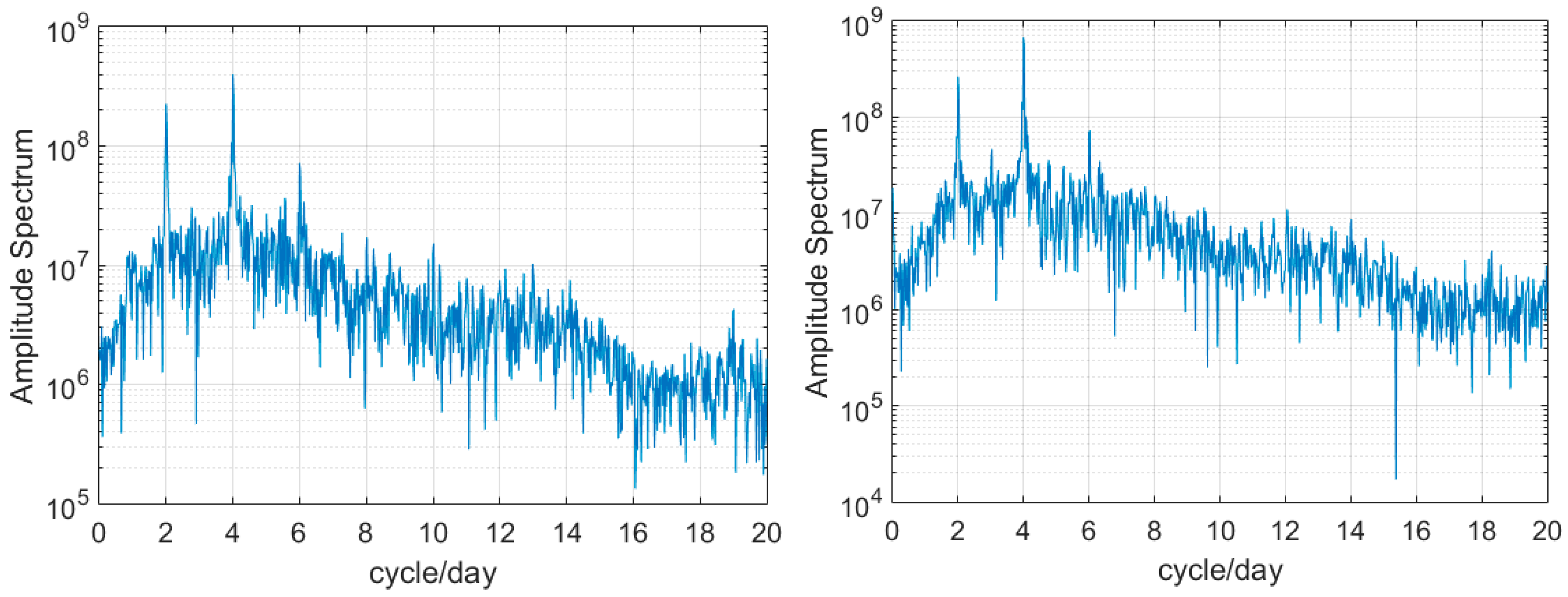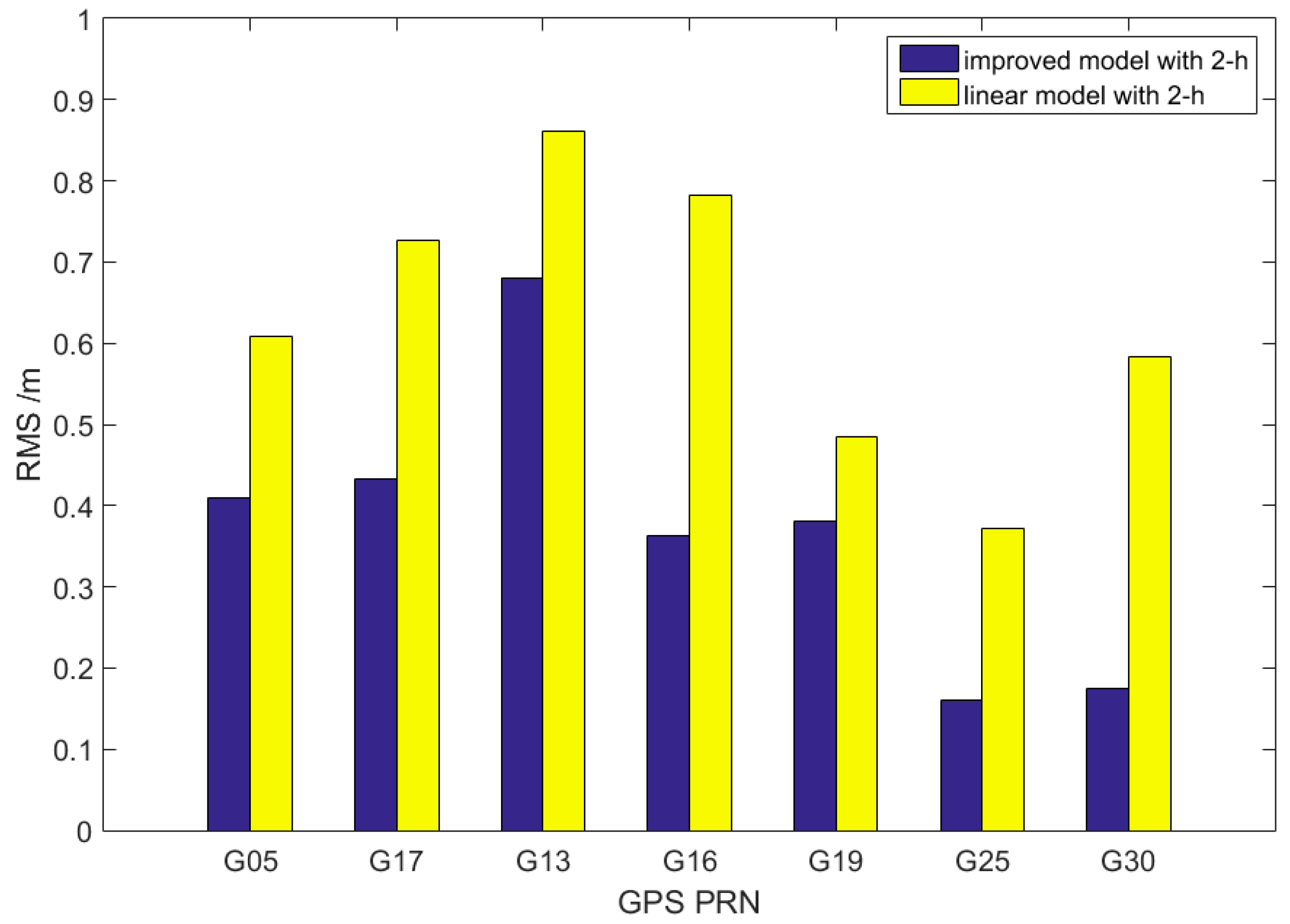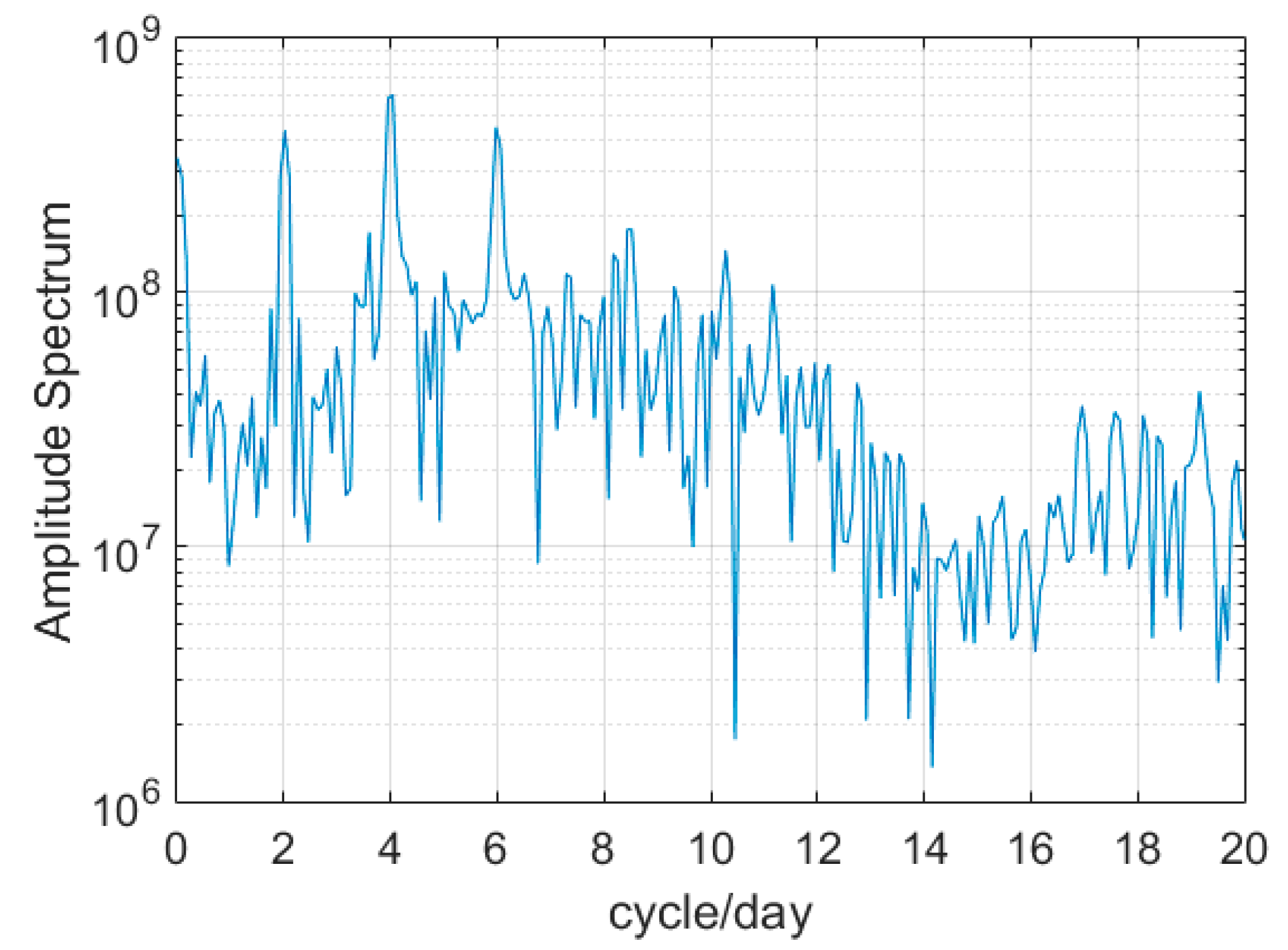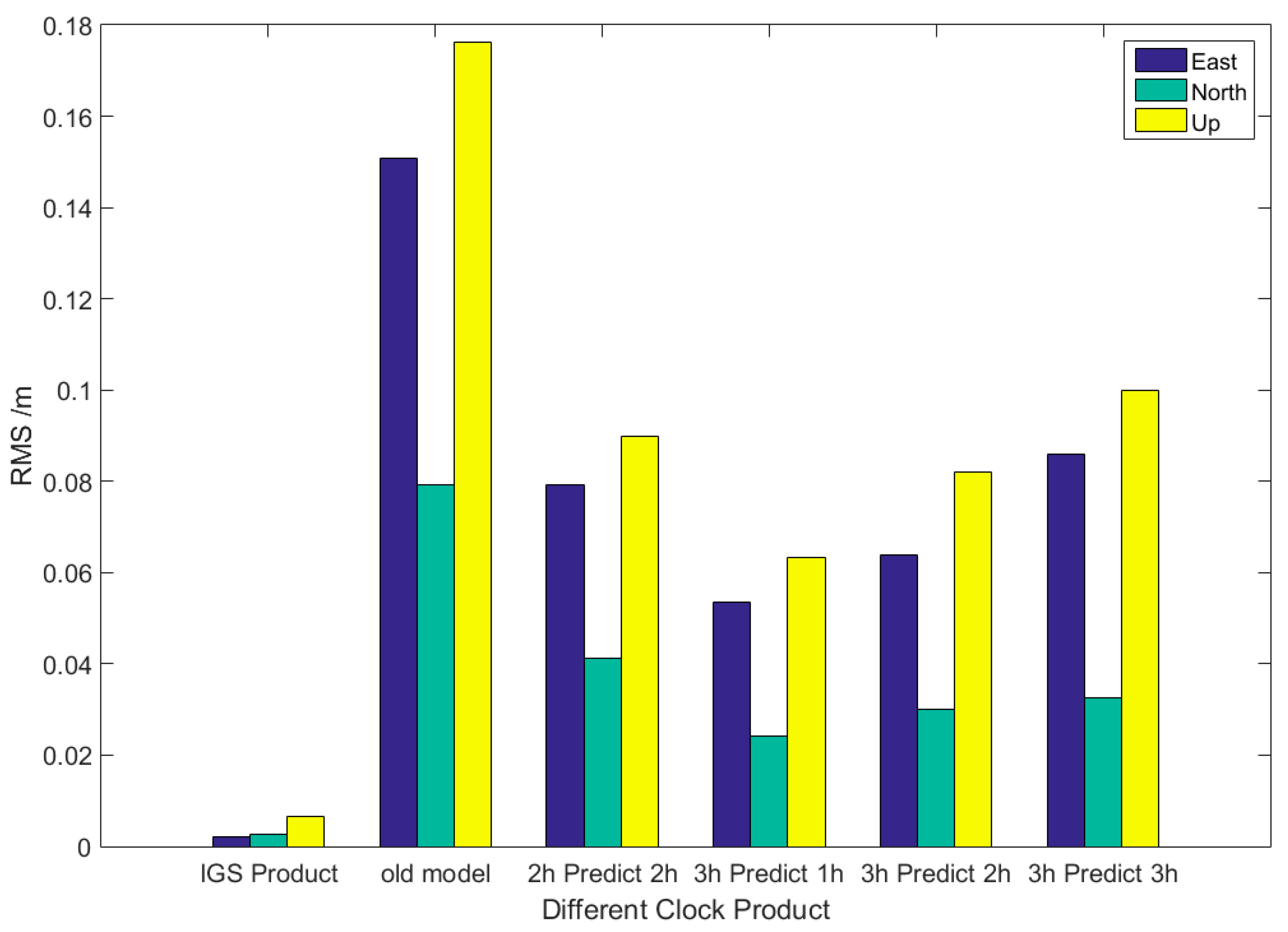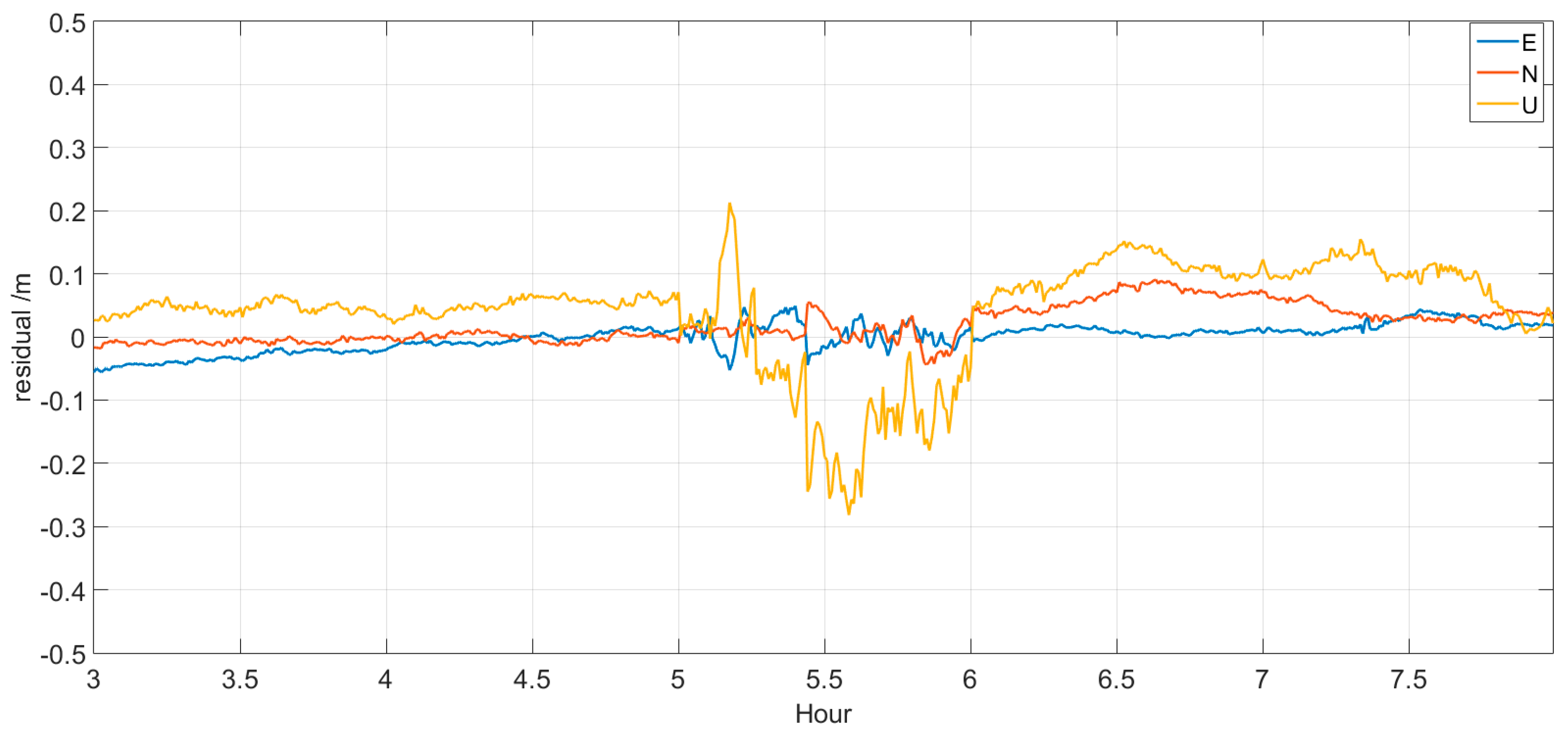In this section, we use the IGS final product to analyze high-precision real-time clock prediction to demonstrate the improved method, and then compare the accuracy with the IGU-P, showing the advantages of the improved model. At last, the practical effectiveness of this model is verified by the real-time clock product.
3.1.1. Experiment Using IGS Final Product
The use of IGS clock final products with 0.075 ns precision provides PPP results at centimeter-level application [
18]. These products refer to the IGS timescale [
19]. The accuracy of PPP solutions of a single day in E, N, and U directions is about 5, 3, and 9 mm, respectively [
20]. We use IGS precision clock products obtained from the IGS website to improve the prediction method and analyze the high-precision real-time clock prediction [
21]. The time span of clock correction is from day 120 to day 151 in 2016, which entails a total of 30 days of IGS precision clock products tabulated at 30-s intervals [
22].
Table 3 indicates that the prediction results of cesium AFS are not ideal when the linear or quadratic model is used. Therefore, only rubidium AFS is discussed in the next part of this paper.
During real-time prediction, only a few hours of short-term data are selected to ensure the accuracy of the clock error of adjacent epochs. A prediction workflow-diagram for one single epoch
is depicted in
Figure 4. The processing method is as follows. First,
n hours clock data are used for the linear sliding prediction of clock correction after
. Second, when the prediction is accumulated to
k hours, the residuals between the prediction and estimation are fitted by the periodic terms obtained through FFT to estimate the coefficients and corresponding time reference. Finally, when the periodic term is added to the subsequent sliding prediction, the prediction accuracy is greatly improved.
Figure 3 indicates that the periodic signals of 12 and 6 h are stronger than those of the 4-h variation. Thus, we let the value of N be 2.
Figure 5 shows the prediction accuracy of the improved model (blue) and the general linear model (yellow) to intuitively compare the improvement degree. We use 2 h of observation to fit the trend term, forecast the 2-h clock correction, and simulate the real-time clock for 30 days with a continuous 30-day IGS final clock product. The difference is that the improved model is added with the periodic term correction using the residuals of the previous day forecast. All of the satellite clock prediction accuracy depicted in
Figure 5 improves. In particular, Block IIF satellites are generally better than 0.3 ns due to their high accuracy. The remaining types of satellites also improve significantly, and several of them, such as G16, exhibit improved accuracy by nearly half. Satellite type does not affect the improvement in model accuracy, and the previous periodic signal model can be applied to the current prediction.
Part of the results of 1-h (blue), 2-h (green), and 3-h (yellow) clock prediction depicted in
Figure 6 is used to determine how much observation is suitable for short-term prediction.
Figure 6a indicates that precision is concentrated in two ranges. The first range is the rest of the Block IIF satellites. The accuracy of their on-board atomic clocks is better than 0.2 ns, and the length of time required for modeling data exerts a minimal effect on the final results. However, when the linear model is used to forecast 1 h only, the accuracy of using 3-h observation is worse than that of using 1-h observation. In other words, the performance of using 1-h observation shown in
Figure 6a is less accurate than that of the two other plans, which demonstrates the effectiveness of the improved model. The second range is the Block IIR and Block IIR-M satellites with precision concentrations between 0.2 and 0.35 ns. Modeling them with 2-h or 3-h observation is better than using the 1-h model, which also confirms that the periodic signal model established with the previous 24-h forecast residuals is suitable for 2-h or 3-h prediction. As for G13, the clock aging should be responsible for the worse accuracy.
The accuracy of the GPS clock prediction for 1-h data modeling in
Figure 6b is lower than that of 2-h and 3-h data modeling for two reasons. First, the use of 1-h observation for fitting is insufficient compared with the prediction length. Second, the aforementioned periodic signal model is more suitable for 2-h or 3-h data modeling. Compared with that in
Figure 6a, the accuracy of 3-h observation prediction in
Figure 6b is generally better than that of 2-h observation prediction. Furthermore, the accuracy of most of the satellite clocks is better than 0.5 ns due to the periodic correction.
The defects and deficiencies of using 1-h observation based on the improved model are obvious in
Figure 6c. From the analysis of all the rubidium clocks, except for a few satellites (G28), the accuracy of clock prediction with 3-h data is better than 0.7 ns. The overall accuracy of Block IIF is better than 0.5 ns. It is worth noting that the performance of G13 significantly improved, which can be helpful for predicting the clock aging.
The following conclusions can be drawn from the comparison of
Figure 6. First, the newest Block IIF on-board AFS has the best prediction accuracy among Block IIF, Block IIR, and Block IIR-M satellites equipped with rubidium atomic clocks; this result is consistent with the previous studies of short-term stability. Second, the accuracy distribution of each satellite in the three graphs is similar, which may be related to the clock sequence trend. Third, the relative optimal prediction accuracy can be obtained by using 3-h observation modeling, whether it is 1-h, 2-h, or 3-h clock correction forecast. The prediction accuracy of 1, 2, and 3 h is better than 0.45, 0.6, and 0.85 ns, respectively.
3.1.2. Comparison with IGU Product
In practical PPP technology, two approaches can be implemented to acquire real-time clock products. In addition to the real-time clock estimates and forecasts based on the real-time GPS observations, IGU-P products and other similar products can also be used. Therefore, IGU ultra-fast product clocks from day 1 to day 296 in 2016 are sampled to obtain statistics on the 1-h, 2-h, and 3-h clock prediction accuracy of IGU-P products. Forecast precision is evaluated with a method described in literature [
23] with reference to IGS post products at a sampling interval of 30 s.
Table 4 shows the improvement of the new model with 3-h observation corresponding to the IGU-P product. The same epoch difference between IGU-P and IGS, identified as outliers, is not analyzed.
Table 4 indicates that a decrease in prediction time leads to a significant improvement of the new model. For 3-h prediction, nearly one-third of the satellite forecast results are better than the new model, whereas for 1-h prediction only two satellite results are better than the new model. It is proven that this improved strategy is more suitable for short-term prediction than the IGU-P model. This new strategy can not only reflect the advantages of the linear model in short-term prediction, but also reflect the advantages of the periodic model in long-term prediction. Besides, the type of Block IIF obviously gains more from the improved model, and there is no significant difference between Block IIR and Block IIR-M. In summary, the improved model proposed for real-time clock application can be used to replace IGU-P products.
